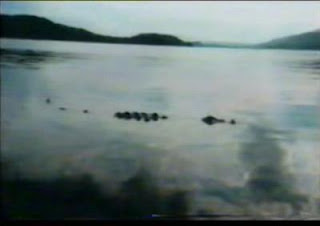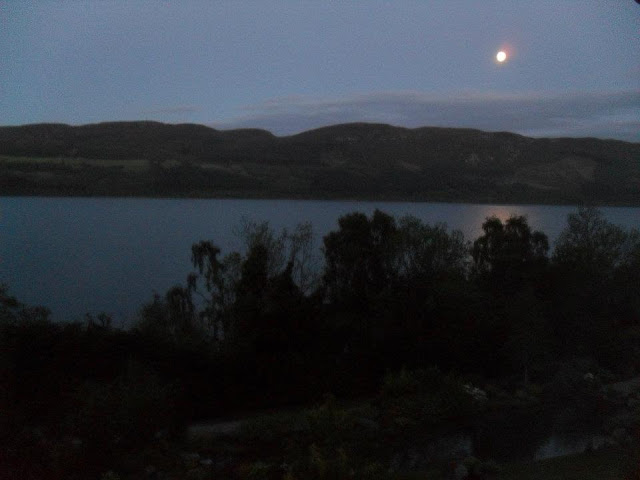Infrasound is sound that is lower in frequency than 20 Hz, which for us humans is the limitation of our normal hearing range. However, at certain high intensities, although we cannot hear it, we can feel the effects of infrasound vibrations upon our bodies.
The purpose of infrasound in animals might be manifold or simply dependent on the needs of the particular species that use it, but I would suspect that one of the main reasons for its use, is its ability to travel long distances.
There are only a few animals that use infrasound, with some of the better-known examples being: the whale, elephant, hippopotamus, giraffe, okapi, rhinoceros and alligator; most of which having been scientifically observed and recorded exhibiting this strange ability.
It is interesting to note regarding this strange phenomenon, that some studies have also indicated that tigers also possess this capability and might even use it to paralyse or panic their prey.
It is this weaponised use of infrasound that coincides with a lesser known theory about Bigfoot, which tells of its possessing a type of infrasound to aid in predation or as a tool with which to drive away unwanted visitors from its habitation.
In the world of Bigfoot witness reports and researchers encounters, there are many stories of people who describe feeling 'uneasy' or 'spooked out' for no apparent reason; or even of some people experiencing an 'inexplicable fear', seemingly coming from out of nowhere and defying logical explanation, taking place either, just before their Bigfoot sighting or in areas where a Bigfoot have been reported.
At times this fear has been so strong as to cause people to leave an area altogether and in some cases, many seasoned outdoorsman and hunters, have been too afraid to return to the area and yet cannot explain why.
In the case of one of Britain’s most famous Bigfoot-like creatures, ‘The Big Grey Man' or 'Am Fear Liath Mor' as it's known in Scots Gaelic’, who is said to haunt the passes and the summit of Ben MacDhui, the tallest peak of Scotland's Cairngorm mountains. Many witnesses have described a mind enveloping fear, almost willing them to plunge off the mountainside to their deaths.
There are also alleged cases of people becoming mysteriously unwell for days or weeks after experiencing this 'creepy feeling'.
What if these elusive beasts we know as Bigfoot or Sasquatch do in fact possess some form of powerful infrasound, that can not only cause us to become fearful enough to take leave of our logical process and leave an area without clear cause; but can also cause humans and other animals who encounter them to become physically unwell from the effects that this 'infrasound' has on organic forms?
This is something that would certainly be a powerful weapon indeed if it is real!
The purpose of infrasound in animals might be manifold or simply dependent on the needs of the particular species that use it, but I would suspect that one of the main reasons for its use, is its ability to travel long distances.
There are only a few animals that use infrasound, with some of the better-known examples being: the whale, elephant, hippopotamus, giraffe, okapi, rhinoceros and alligator; most of which having been scientifically observed and recorded exhibiting this strange ability.
It is interesting to note regarding this strange phenomenon, that some studies have also indicated that tigers also possess this capability and might even use it to paralyse or panic their prey.
 |
| 'Crouching Tiger' - by Eugene Delacroix, 1839. |
It is this weaponised use of infrasound that coincides with a lesser known theory about Bigfoot, which tells of its possessing a type of infrasound to aid in predation or as a tool with which to drive away unwanted visitors from its habitation.
In the world of Bigfoot witness reports and researchers encounters, there are many stories of people who describe feeling 'uneasy' or 'spooked out' for no apparent reason; or even of some people experiencing an 'inexplicable fear', seemingly coming from out of nowhere and defying logical explanation, taking place either, just before their Bigfoot sighting or in areas where a Bigfoot have been reported.
At times this fear has been so strong as to cause people to leave an area altogether and in some cases, many seasoned outdoorsman and hunters, have been too afraid to return to the area and yet cannot explain why.
In the case of one of Britain’s most famous Bigfoot-like creatures, ‘The Big Grey Man' or 'Am Fear Liath Mor' as it's known in Scots Gaelic’, who is said to haunt the passes and the summit of Ben MacDhui, the tallest peak of Scotland's Cairngorm mountains. Many witnesses have described a mind enveloping fear, almost willing them to plunge off the mountainside to their deaths.
There are also alleged cases of people becoming mysteriously unwell for days or weeks after experiencing this 'creepy feeling'.
What if these elusive beasts we know as Bigfoot or Sasquatch do in fact possess some form of powerful infrasound, that can not only cause us to become fearful enough to take leave of our logical process and leave an area without clear cause; but can also cause humans and other animals who encounter them to become physically unwell from the effects that this 'infrasound' has on organic forms?
This is something that would certainly be a powerful weapon indeed if it is real!
I admit that the theory sounds quite far-fetched, and to those who do not already hold to some conviction of the reality of this creature, ascribing yet another extraordinary facet to its abilities, might seem a little self-indulgent. Nevertheless, since there are cases recorded by the Fauna Communications Research Institute in North Carolina, where people have reported feeling the paralysing effects of infrasound from known animals like the tiger, then why could the same criteria not apply to a creature like the Bigfoot?
 |
| Fourier transform of infrasound recording Th Indblad - 2009 |
One well known British Bigfoot Researcher who has both managed to record an example of infrasound and has also had several British Bigfoot sightings, is Neil Young; who was featured in the U.K. episode of Finding Bigfoot. Neil has been kind enough to share some of his experiences of the British Bigfoot with me, including a sound recording he had made of a British Bigfoot possibly using infrasound. His encounter has been relayed here in his own words, so as to omit nothing in my translation or retelling of his story:
“I’ve had two possible sightings of The British Bigfoot, both in the same location, 8 years or so apart. The first sighting took place around 6am one morning as I was looking from my car across a section of clear-cut. There was a mist and it was just starting to get light. I saw an upright figure walking through the clear-cut and it climbed over the perimeter fence, the forestry commission erected to keep the roe deer out. It couldn't have been a person as we were the only chaps up there for sure. The second sighting happened on a forest track. After hearing the vocals they make, I got down and waited with the camera ready, then one walked across the track and back into the woods. As for what they are, only a body will tell us that, but I'm in the flesh and blood camp. They are also capable of producing infrasound bursts and I assume they have advanced nocturnal vision, perhaps with the same ocular capacity as a crocodile with double the available light bouncing around the retina, due to possible mirrored layers within their eyes. In my experience, they leave vertical sticks driven into the earth. It's their way of saying 'I inhabit this area'. They will often stalk you out of pure interest. If they think you're alone they'll come in close...ish. If you're after a sighting, go in alone, but keep doing it as it's a ratio factor. By going to the same spot again and again and simply sitting there, they will smell you out. Regarding infrasound, we obtained a sound file. We used the Zoom H4N Recorder to pick this burst up. It's all bass so you need to listen with headphones, but it's very impressive. We only picked it out on the recording the following day as we decided to hike back out and sleep in the car as we felt very uneasy that night, so we left the recorder in camp. That's the only night we ever felt threatened. I can't explain it."
I think it is very significant that individuals who have dedicated themselves to the search for Bigfoot in Britain, experienced a feeling that made them take leave of their logical impulse to discover a new creature and decide to abandon a significant research area in which they were hoping to find the animal.
Having personally studied the recording of the 'alleged' infrasound; it seems plausible to assume that this sound was being used to drive Neil and his research partner away from a significant habituation and unbeknownst to them until they heard the recording the following day, it seems to have worked.
Written by Andrew McGrath
For more on Beasts of Britain, check out:
books TeaserTrailer Blog Facebook Twitter Instagram Website Pinterest Beasts of Britain Map Tumblr Merch Beastly Theories Podcast



















